-
Shipping Containers
- Container Parts
- Roof Panel
- Side Panel
- Front End Panel
- Door Panel
- Front Corner Post
- Rear Corner Post (Outer/Inner)
- Cross Member
- Bottom Side Rail
- Top Side Rail
- Door Sill
- Front Bottom Rail
- Top End Rail
- Door Header Upper/Lower
- Door Rail
- Floor Spacer
- Angle
- Top/Bottom End Rail
- Door Edge Member
- Door Sealing
- Door Frame Profile
- Door Lining
- Door Hardwares
- Door Gasket
- Side Panel/Lining
- T-Floor
- Roof Panel/Lining
- Cross Member
- Bottom Side Rail
- Top Side Rail
- Ledge PVC
- Kazoo Drain
- Auto Drain
- Alu Tube
- Auto Drain Center Part
- PVC Drain Pipe
- PVC Plugs f. Drain with Ring and Steel Wire
- Door Screw
- Door Screw Nut
- Door Screw Rubber
- Tapping Screw
- Stainless Blind Rivet
- Lashing Ring
- CSC Plate
- Welding Wire
- Tapping Screw Bit
- Vehicle Parts
- Ship Supplies
- 00. Provisions
- 11. Welfare Items
- 15. Cloth & Linen Products
- 17. Tableware & Galley Utensils
- 19. Clothing
- 21. Rope & Hawsers
- 23. Rigging Equipment & General Deck Items
- 27. Painting Equipment
- 31. Safety Protective Gear
- 33. Safety Equipment
- 35. Hose & Couplings
- 37. Nautical Equipment
- 39. Medicine
- 45. Petroleum Products
- 47. Stationery
- 49. Hardware
- 51. Brushes & Mats
- 55. Cleaning Material & Chemicals
- 59. Pneumatic & Electrical Tools
- 61. Hand Tools
- 63. Cutting Tools
- 65. Measuring Tools
- 69. Screws & Nuts
- 75. Valves & Cocks
- 77. Bearings
- 79. Electrical Equipment
- 81. Packing & Jointing
- 85. Welding Equipment
- 87. Machinery Equipment
- Vehicles
- Lashing Tools
- Logistic Tools
Container PartsWear and Tear on Shipping Container DoorsDec 14,2022Shipping Container Door Diagram and Troubleshooting
Shipping containers come in different dimensions, 8ft, 10ft, shipping containers dimensions of 20ft and shipping container dimensions of 40ft being the most common. However, no matter what the size, shipping container parts and mechanics are similar.
1. Doors
2. Lockbox
3. Lockrods, cam keepers, handles
4. Rubber gaskets
5. ISO markings and CSC plate
6. Hinge pins
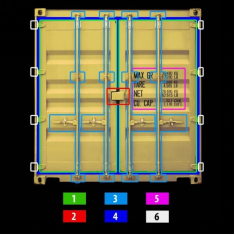
1.Doors
Two door leaves are each fabricated from two vertical rolled hollow sections and 2 horizontal c section members. The frame is infilled with corrugated steel paneling.
These are normally attached to the rear corner posts each with four drop forged steel hinge blades. The blades allow 270 degree opening which allow the doors to swing back against the container side wall.
(Cargo may shift during transit. Look at the container to make sure that the doors are aligned and level, both top and bottom. In cases where the container frame is racked and the door gear will not operate correctly.)
2.Lockbox
The lock box is a steel box welded to the right hand door which overlaps a staple welded to the left hand door. A padlock, normally type CISA type 285 66 can then be attached inside the lock box through the staple and is then protected from direct attack, hindering attempts to gain entry to the container.
3.Lockrods, cam keepers, handles
Each door is fitted with 2-4 vertical lock rods to enable container door opening, closing and locking of the doors.
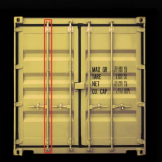
lockrod
At the end of each lock rod (top and bottom) is a cam welded in place which engages with knuckles, also known as cam keepers.
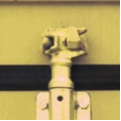
cam keeper
The action of engaging the cams to the keepers forms an anti-racking function.
(In certain cases, often unfortunately too many, contents of the shipping container may have shifted, or containers even dropped, causing shipping container doors and lockrods to warp)
The door handle rotates the lockbar to initiates the container door opening process by forcing the cams out of their keepers. Each door handle has a door locking handle retainer that slides over the door handle when in locked position.
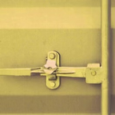
door handle
4.Rubber gaskets
Rubber gaskets are fitted to the container doors during the manufacturing process and prevent water ingress.
(Door gaskets are designed to present two or more fins against the structure or adjacent door. These are generally flexible but when the gasket is damaged, they may become hard or blocked thus jamming the door closed, or preventing it being closed.)
5.ISO markings and CSC plate
ISO markings and a consolidated data plate allow worldwide intermodal transport when left in place and updated as necessary.
6.Hinge pins
Of course for a door to work, you need hinges.
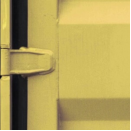
hinge and hinge pins
(In certain cases when doors are difficult to open, hinge pins and blade are seized due to corrosion.)
Wear and Tear
Shipping containers often take a beating, traveling around the world, being exposed to freezing conditions, and rust due to seawater or when the frost has melted.
Injuries often occur as a result of personnel trying to open and close difficult container doors, often the result of inappropriate techniques being used to open them.
Shipping container doors are not typical doors and there are 4-5 hinges per door. The hinge pins must be lined up correctly for the doors to be free to fully open and close.
Here are some likely reasons a frozen shipping container door will not open or close.
The container frame is racked so that the door gear will not operate correctly. This may be caused by cargo shifting during transit. Look at the container to make sure that the doors are aligned and level, both top and bottom.
The hinge pins and blade are seized due to corrosion.
The door gasket has been damaged and is preventing container door opening. Door gaskets are designed to present two or more fins against the structure or adjacent door. These are generally flexible but when the gasket is damaged, they may become hard or blocked thus jamming the door closed, or preventing it being closed.
Water has become trapped between the doors and frozen, particularly relevant to refrigerated cargoes, or containers with moisture releasing cargoes in cold weather.
CIMC Equilink provides all kinds of dry container parts, reefer container parts and iso tank parts. If you are looking for container parts or shipping containers for sale from china , or you just have questions about container declaration and transportation, please visit us by email(info.equilink@cimc.com)or submit a quick quote.
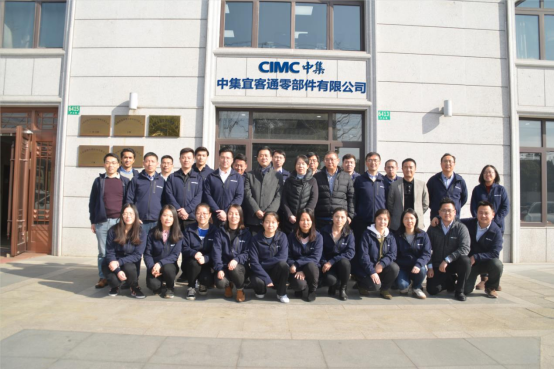
Quick Quote
Copyright © 2019 CIMC Equilink - Container Parts

 中文
中文















